Volume 43 Number 3 (2012.9)
Special Feature
Metallic Materials
Part I. Special Feature
Overview
Research Reports
-
2. High Strength Fe-Ni-Co-Ti Alloy
 (1,108kB)
(1,108kB)pages 1-10
Shigeru Kuramoto, Tadahiko Furuta, Naoyuki Nagasako and Zenji Horita
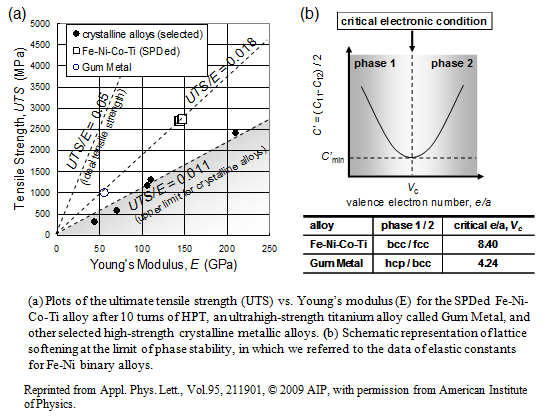
We recently have shown that an ultrahigh strength Fe-Ni-Co-Ti alloy with enhanced ductility can be realized by introducing the paradox concept of lattice softening. Our recent researches on the high strength Fe-Ni-Co-Ti alloy are summarized with a focus on our alloy design approach to control the atomic bonding of the metallic crystalline materials. -
3. In-situ Observation of Microstructural Changes of Steel during Hot Deformation
 (1,563kB)
(1,563kB)pages 11-15
Yasuhiro Yogo, Hirohisa Takeuchi, Kouji Tanaka, Noritoshi Iwata and Takashi Ishikawa
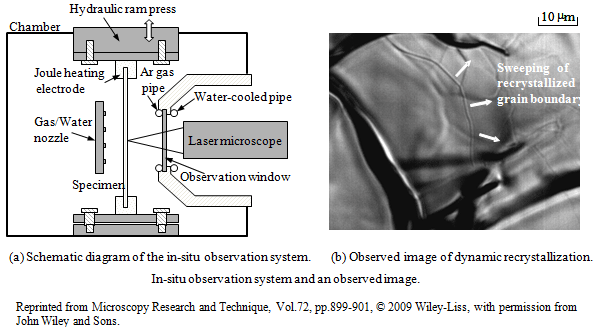
In this paper, a new observation method for observing microstructural changes during hot deformation is developed. Two observation results, grain growth at high temperature and dynamic recrystallization, conducted by the developed in-situ observation method are shown.
-
pages 17-26
Hideaki Ikehata, Kouji Tanaka and Carlos Capdevila
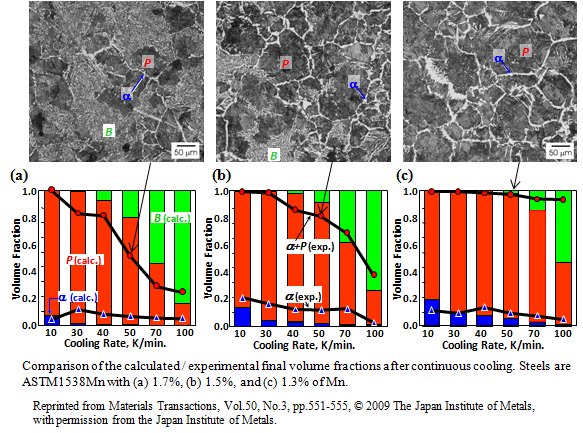
Successive transformations of medium-carbon forging steels were kinetically modeled and compared with experimental mixed microstructures of ferrite (α), pearlite (P ), and bainite (B ). Using a combination of multicomponent thermodynamics and nucleation & growth theories, satisfactory agreement was obtained in terms of Mn content, austenite grain size, and cooling rate. The model provided practical hot-forging conditions for avoiding the formation of B in final products.
-
5. High Specific Strength Aluminum Alloys
 (1,540kB)
(1,540kB)pages 27-32
Hideaki Matsuoka and Takashi Maeshima
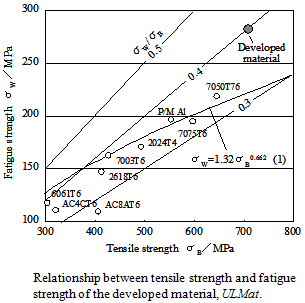
ULMat (Ultra Strong Material), a new powder metallized aluminum alloy, has high specific tensile strength, high fatigue strength, and high thermal stability up to 723 K. These excellent properties appear to be due to the thermal stability of coherent L12_Al3(Zr,Ti) phase, which precipitated during hot extrusion. ULMat is considered to be a promising aluminum alloy for improving the fuel consumption of automobiles.
-
6. Consideration of Dy Diffusion Treatment on the Coercivity of NdFeB
 (1,519kB)
(1,519kB)pages 33-41
Yukio Takada, Yuji Kaneko, Keiki Fukumoto, Noritaka Miyamoto, Akira Manabe, Shin Imada and Shigemasa Suga
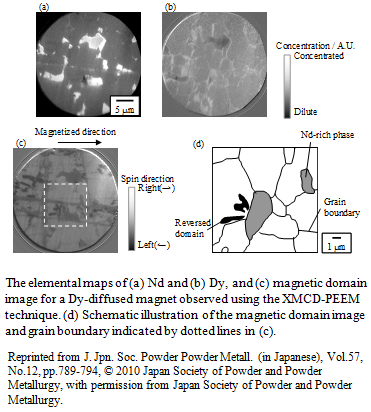
Effects of Dy diffusion treatment on the coercivity of NdFeB sintered magnets were considered by analyses of Dy distribution and magnetic domain structure. The suppression of the oxidation of Dy in the NdFeB magnets was also studied in order to improve the effect of Dy diffusion.
-
7. Effect of Nano-sized Grain Boundary on Coercivity of NdFeB Magnets
 (1,292kB)
(1,292kB)pages 43-50
Takashi Sato, Tetsu Ohsuna, Yuji Kaneko, Yukiko Takahashi, Kazuhiro Hono and Toshiyuki Shima
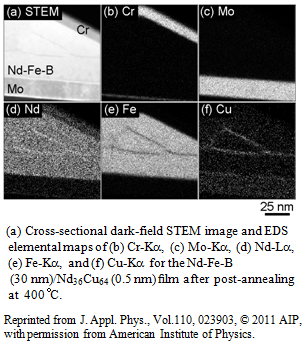
The effects of the nano-grains and the grain boundaries in ternary Nd-Fe-B magnets on the coercivity were investigated. The maximum coercivities of the Nd-Fe-B and post-annealed Nd-Fe-B/Nd36Cu64 films were 19.5 and 26.1 kOe, respectively. The increase in coercivity is associated with the infiltration of non-magnetic elements into the grain boundary.
Part II. Highlighted Papers
Review
-
8. Key Technologies for the Development of an Automotive MEMS Sensor
 (1,525kB)
(1,525kB)pages 51-60
Teruhisa Akashi, Motohiro Fujiyoshi, Yoshiyuki Hata, Yutaka Nonomura, Hirofumi Funabashi and Yoshiteru Omura
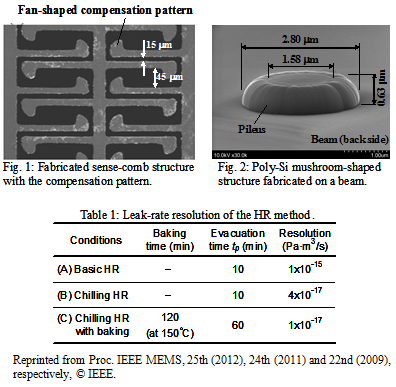
Three types of elemental technologies that are useful for the development of a capacitive MEMS sensor were developed. The technologies are extremely deep silicon etching using a compensation mask pattern (Fig. 1), a z-directional anti-stiction technology using a poly-Si mushroom-shaped structure (Fig. 2), and a high-resolution leak-test method (Table 1). Effectively, these elemental technologies help to develop an automotive MEMS sensor.
Research Reports
-
9. Realization of Fiber Lasing under Natural Sunlight Pumping
 (1,319kB)
(1,319kB)pages 61-68
Shintaro Mizuno, Kazuo Hasegawa, Hiroshi Ito, Takenobu Suzuki and Yasutake Ohishi
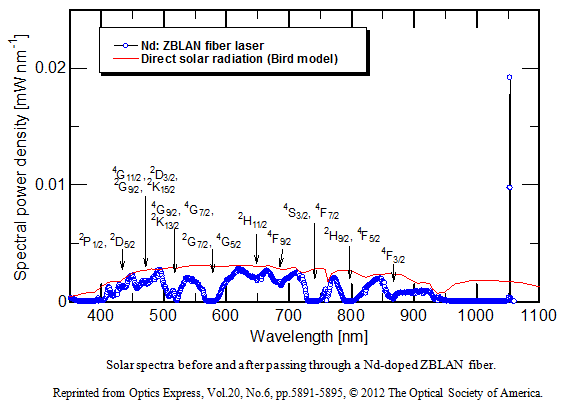
A solar-pumped fiber laser (SPFL) is demonstrated that uses a double-clad Nd-doped fluoride glass (ZBLAN) fiber and an off-axis parabolic mirror. The full-width-at-half-maximum of the laser line is approximately 0.013 nm at the peak wavelength of 1053.7 nm. The lasing threshold is only 49.1 mW and the slope efficiency is 3.3%.
-
10. Light Manipulation with Dielectric Gratings
 (699kB)
(699kB)pages 69-75
Hideo Iizuka, Nader Engheta, Hisayoshi Fujikawa, Kazuo Sato and Yasuhiko Takeda
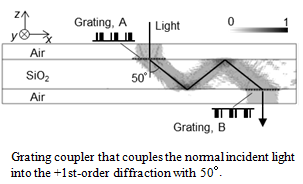
Gratings have periodic structures composed of ridges and grooves. Here, two functional gratings in our recent theoretical works are reviewed. One is a grating coupler that efficiently diffracts the normal incident light into the +1st-order diffraction with a large refraction angle such as 50°. The other is a double-sided grating switch with the horizontal shift that provides a relatively wide bandwidth due to the non-resonance operation. -
pages 77-94
Yasuhiko Takeda and Tomoyoshi Motohiro
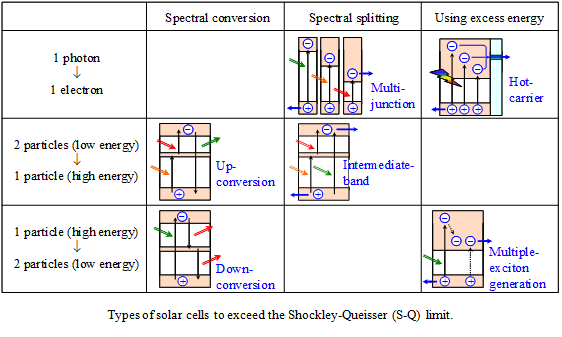
We have constructed new detailed-balance models to calculate limiting conversion efficiencies of multiple exciton generation solar cells and hot-carrier solar cells, which have been expected to provide high conversion efficiency over 50%. The practically unavoidable energy dissipation processes have been found to be seriously detrimental to the efficiency. Therefore, it seems very difficult for these types of solar cells to compete against currently used solar cells.
